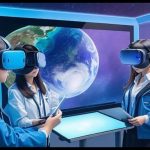Introduction of clochant
The term “clochant” might not ring a bell for many, but for those in the know, it signifies a fascinating blend of tradition and innovation in the world of architecture and design. Derived from the French word for “ringing,” clochant refers to the intricate bell towers often found adorning churches, cathedrals, and other significant buildings. These structures are not merely functional; they embody the aesthetic and cultural ethos of their time. In recent years, the concept of has transcended its historical roots, inspiring modern interpretations in various fields such as architecture, design, and even technology. This article delves into the multifaceted nature of , exploring its historical significance, contemporary relevance, and future potential.
Historical Significance of Clochant
The origins of can be traced back to the early Middle Ages when bell towers were integral to the design of religious buildings. These towers were not just ornamental; they played a crucial role in community life. Bells were used to signal the time for prayer, mark significant events, and serve as a form of communication in the absence of modern technologies.
One of the most iconic examples of is the bell tower of Notre-Dame de Paris. Completed in the 13th century, this Gothic masterpiece is renowned for its architectural grandeur and historical importance. The bells of Notre-Dame have witnessed centuries of events, from royal coronations to wartime alarms, embedding themselves in the cultural fabric of France.
Similarly, the Leaning Tower of Pisa, though primarily famous for its unintended tilt, is another exemplar of. Constructed as the bell tower for the cathedral of Pisa, it showcases the unique fusion of engineering and aesthetics that characterizes many historical bell towers.
Contemporary Interpretations
In contemporary architecture, the essence of has been reimagined in various innovative ways. Modern architects and designers draw inspiration from the structural elegance and symbolic significance of historical bell towers to create buildings that resonate with both tradition and modernity.
A notable example is the Burj Khalifa in Dubai. While it does not feature a traditional bell tower, the design incorporates elements reminiscent of the verticality and grandeur of historical . Its spire, which pierces the sky, evokes the same sense of reaching towards the heavens, a hallmark of traditional bell towers.
In the realm of public spaces, the concept of has been adapted to create interactive installations that blend art and technology. The ArcelorMittal Orbit in London, for instance, features a striking spiral design that echoes the spiraling staircases often found in bell towers. This modern serves not just as a landmark but as a dynamic space for public engagement and artistic expression.
Clochant in Design and Technology
Beyond architecture, the principles of have found their way into design and technology. The idea of creating something that is both functional and aesthetically pleasing is a core tenet of many modern innovations.
In product design, this is evident in the way devices are engineered to be both user-friendly and visually appealing. The Apple Watch, for example, combines cutting-edge technology with a sleek, elegant design, much like how historical blend utility and beauty.
In urban planning, smart city initiatives often incorporate elements inspired by the organizational and communicative functions of historical bell towers. Modern in this context are digital infrastructure systems that facilitate communication, enhance safety, and promote community engagement.
The Future of Clochant
As we look to the future, the concept of continues to evolve, driven by advances in technology and changing cultural dynamics. Future interpretations of may include even more integrated and sustainable designs, leveraging renewable energy sources and smart materials to create structures that are both eco-friendly and visually striking.
The integration of artificial intelligence and augmented reality could further transform the clochant, enabling interactive experiences that blend the physical and digital worlds. Imagine a bell tower that not only rings but also projects holographic displays, telling stories of its historical significance and engaging visitors in a multidimensional experience.
FAQs About Clochant
Q: What is a clochant? A: Clochant refers to bell towers traditionally found in religious and significant buildings, known for their architectural beauty and cultural importance.
Q: How did clochants originate? A: Clochants originated in the early Middle Ages, serving both functional and aesthetic purposes in religious and community settings.
Q: Can modern buildings have clochants? A: Yes, contemporary architects often incorporate elements inspired by traditional clochants into modern designs, creating structures that blend tradition and innovation.
Q: What are some famous examples of clochants? A: Notable examples include the bell tower of Notre-Dame de Paris and the Leaning Tower of Pisa.
Q: How is the concept of clochant used in technology? A: In technology, the principles of clochant influence design and functionality, ensuring that modern devices are both useful and aesthetically pleasing.
Conclusion
The clochant, with its roots in historical architecture, continues to inspire and influence modern design and technology. From majestic bell towers that mark the skylines of ancient cities to innovative structures in contemporary urban landscapes, the essence of clochant endures. As we move forward, the clochant will undoubtedly evolve, embracing new technologies and sustainable practices while retaining its core values of functionality, beauty, and cultural significance. This enduring legacy ensures that clochants will remain a vibrant and integral part of our architectural and cultural heritage.










